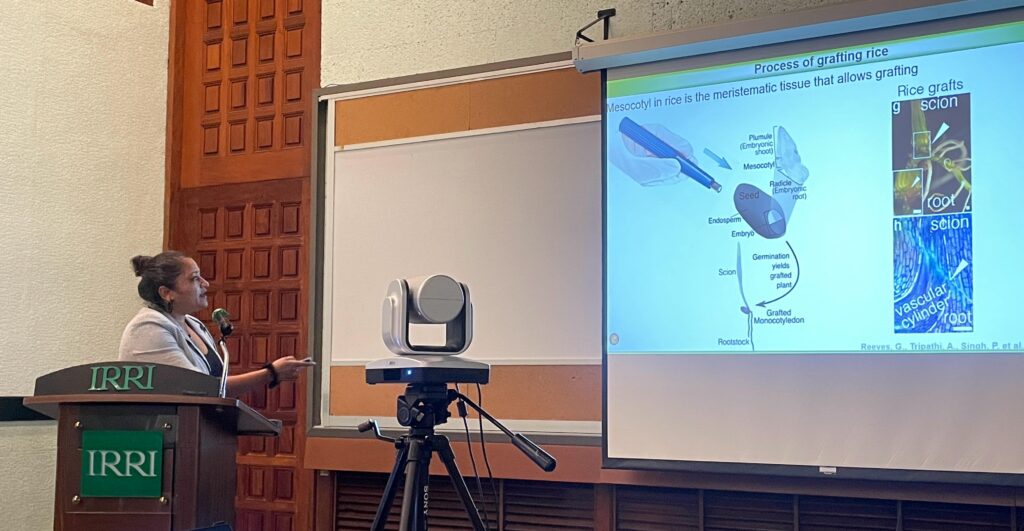
LOS BAÑOS, LAGUNA (June 18, 2025) — Dr. Pallavi Singh, Associate Professor at the School of Life Sciences, University of Essex, UK, and her team have developed a successful method for grafting rice—marking a breakthrough for monocot plants, which have long been considered impossible to graft.
Their findings show that grafting in rice is possible by joining the young shoot and root at the root–shoot junction (called the mesocotyl), where the tissues can fuse and form vascular connections.
Grafting is a plant propagation technique that joins the shoot of one plant (the scion) to the root system of another (the rootstock), allowing them to grow as a single, functional plant. While widely used in horticulture, this technique has rarely been applied to monocots like rice due to structural limitations.
“Our time-course studies following grafting in rice reveal that significant cell expansion occurs on days 1 and 3 post-grafting, followed by the onset of cell division and vascular differentiation by day 7,” Dr. Singh explained. The team also found that plant hormones play a role in promoting the formation of vascular connections between grafted tissues, supporting a stable and functional union.
Once established, these grafts can transfer beneficial root traits such as drought tolerance, improved nutrient uptake, and disease resistance. “We’ve also explored whether grafting can be used to influence shoot traits,” added Dr. Singh, referring to experiments with a rice mutant that produces an unusually high number of tillers.
“It’s hard at first,” she admitted, “but once you get the technique right, you can graft monocots easily and successfully.”
Grafting may also enhance water-use efficiency. “We’re testing if combining a water-efficient root system with a standard shoot could improve both photosynthesis and water use in rice,” she said. Encouragingly, the grafted plants maintained normal photosynthetic function, with responses to rising carbon dioxide similar to those of non-grafted plants.
To expand the potential of grafting in monocots, Dr. Singh announced a new collaboration with the University of the Philippines Los Baños (UPLB) on a British Council funded project to apply grafting techniques in disease resistance in bananas. Future research will also explore the use of grafting in hardy crops like sorghum and millet, with the goal of developing root systems tailored to local agroecologies.
Dr. Singh visited IRRI headquarters from June 13-18, 2025, to explore potential areas of collaboration on rice research on her current UKRI Future Leaders Fellowship Grant. The visit also allowed her to present her findings during RBI’s Monthly Seminar Series, which aims to spotlight emerging insights into rice breeding and allied fields.
Dr. Singh leads the Pallavi Singh Lab, where her team tackles urgent challenges in plant science. Their research bridges fundamental discovery and practical solutions, with a strong focus on climate resilience and sustainable agriculture. The lab collaborates with international partners including IRRI (Philippines), IRD (France), IRRI South Asia Regional Centre (India), and the Max Planck Institute of Molecular Plant Physiology (Germany).